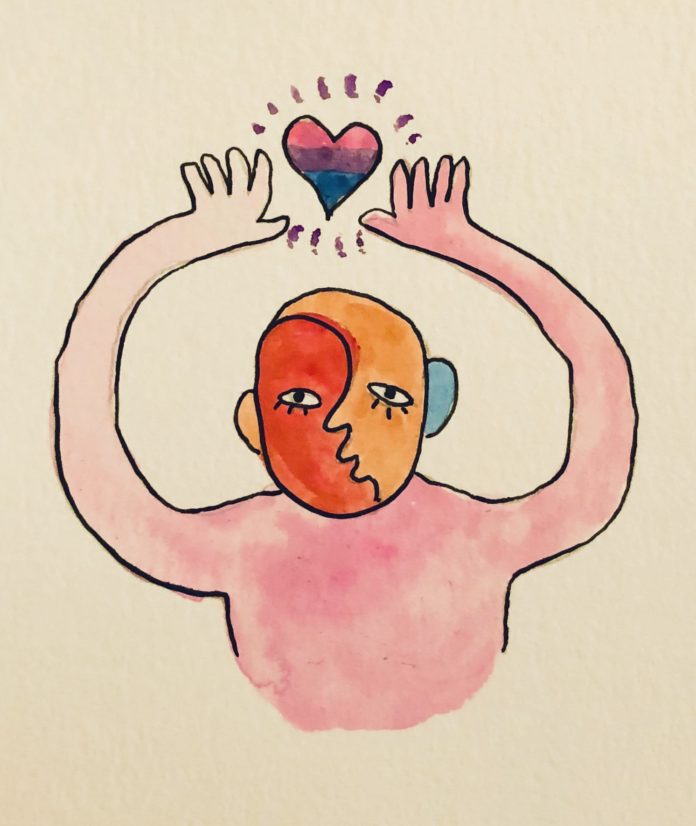When you think of the term “bisexual,” an abundance of myths and connotations come to mind: pick a side, it’s a stepping stone or a phase, you just haven’t met the right guy, and they’re more likely to cheat.
As a bisexual woman myself, I have experienced the stigma surrounding the bisexual community and how these narrow-minded stereotypes mold and shape the societal, collective respect for those identifying as bi.
Bisexuality is defined as the romantic and sexual attraction to both sexes—male and female. Bisexuality is different from pansexuality, which is defined by the sexual and romantic attraction to any person of any sex or gender.
Despite their similarities, the two are very different and many people struggle to see the difference. To truly understand bisexuality, one must understand being bisexual isn’t defined or dependant on who you’re with, but rather who you’re attracted to.
One common misconception is if a bisexual individual is currently with a partner of one gender, they’re not actually bisexual. Even if someone is in a committed relationship with a person of one gender, their sexual orientation and sexual preferences haven’t been dismissed.
Bi-erasure and biphobia are prominently embedded in the world we live in today. Bi-erasure is designed to ignore and suppress the expression of those attracted to both sexes, and biphobia is aversion to the sexual orientation as a whole.
Katharine Bausch is a women and gender studies professor at Carleton University. She says people have varied and unique experiences of genders and sexualities, and popular media often tries to universalize them.
She says bisexuality is often either ignored or stereotyped as a phrase, indecisiveness, or not a real thing.
Bisexual women, for instance, are often shown as having sex with men when they are stable and respectable and having sex with women when they are ‘out of control.’
Bausch said stereotypes are harmful and powerful. Popular media can change to allow all people, not just cis, white, straight people, to tell their stories by creating three-dimensional, complicated and nuanced characters. She said this won’t change everything, but it can be very powerful.
Truthfully, my own experience with bisexuality has been quite secretive and closeted. I am currently seeing a man, and as a result I’ve been afraid that the gay community will shame me for identifying as someone who is attracted to both genders.
However, as I’ve gotten older and started university, I’ve realized the importance and merit in identifying proudly as bi. In order to truly dispel and challenge these universal concepts, I had to accept that being with a man doesn’t erase or diminish my sexuality, but rather solidifies that people with so-called heteronormative relationships aren’t necessarily what they seem.
Bi women are often targeted and shamed for seeing both sexes. It’s seen as attention-seeking and promiscuous, but the slurs only have power when you give it to them.
Being a bisexual is a valid, crucial part of the queer community. Whether I sleep with men or women, I am bisexual. Whether I marry a man or a woman, I remain bisexual. Being bisexual isn’t another fast-fashion emerging trend that will soon be left on the racks in the clearance section.
It’s not a choice—it’s an orientation like any other, one that deserves respect and recognition. Bisexuality is fetishized and glamourized in almost every teenage soap opera known to man, especially bisexual woman, who are often seen kissing their friends only to end up with prince charming in the end.
Despite the recognition and representation, these portrayals are only furthering the damage and harassment that many in the bi community still face. Bisexual women aren’t entertainers, and they certainly aren’t interested in pleasing and satisfying the male gaze.
File photo.






